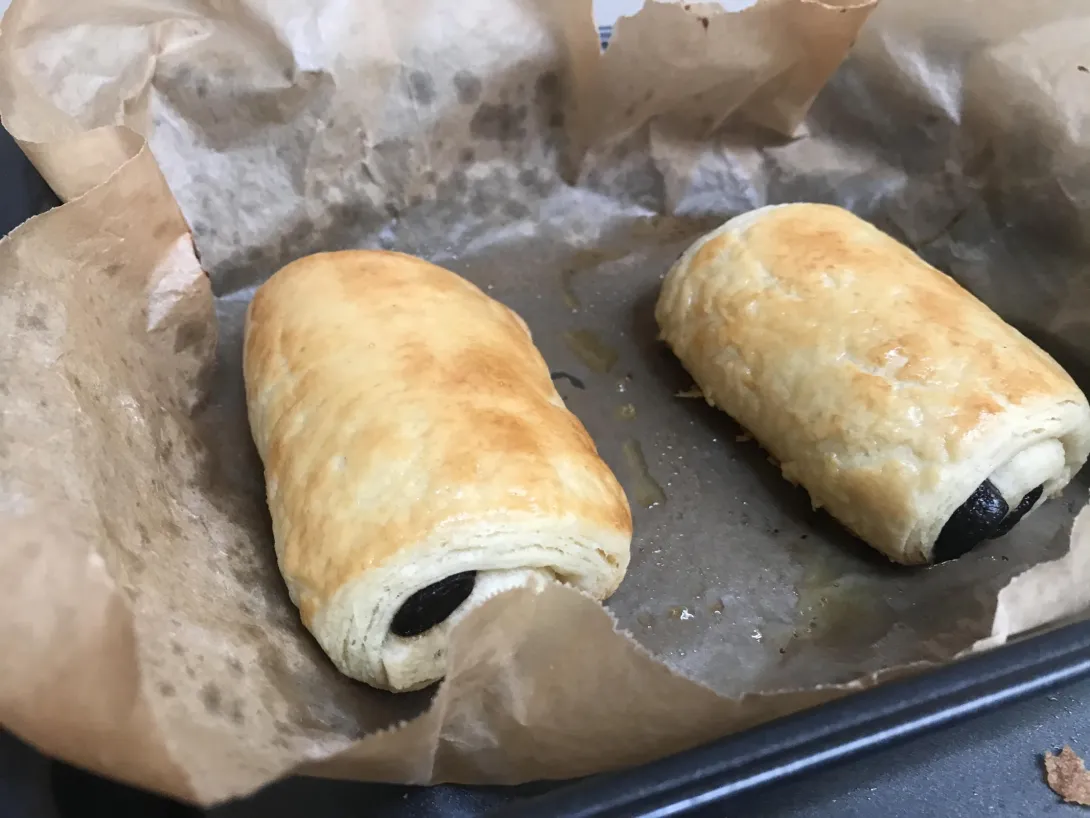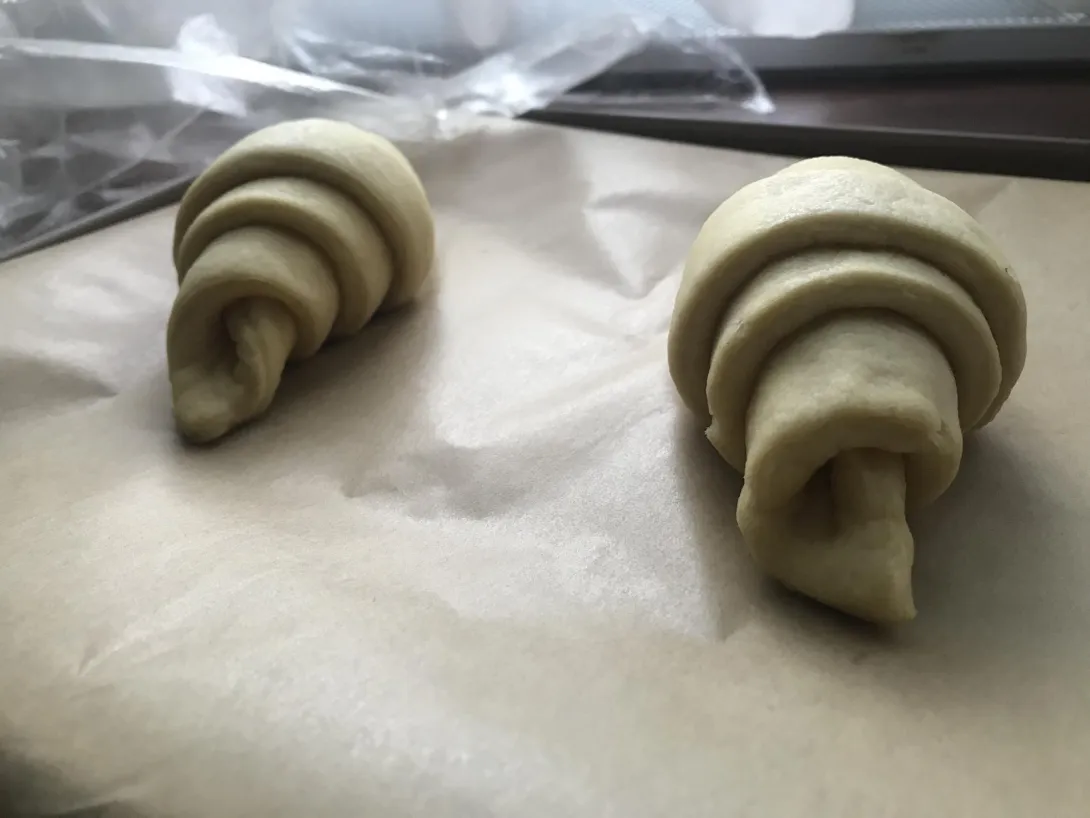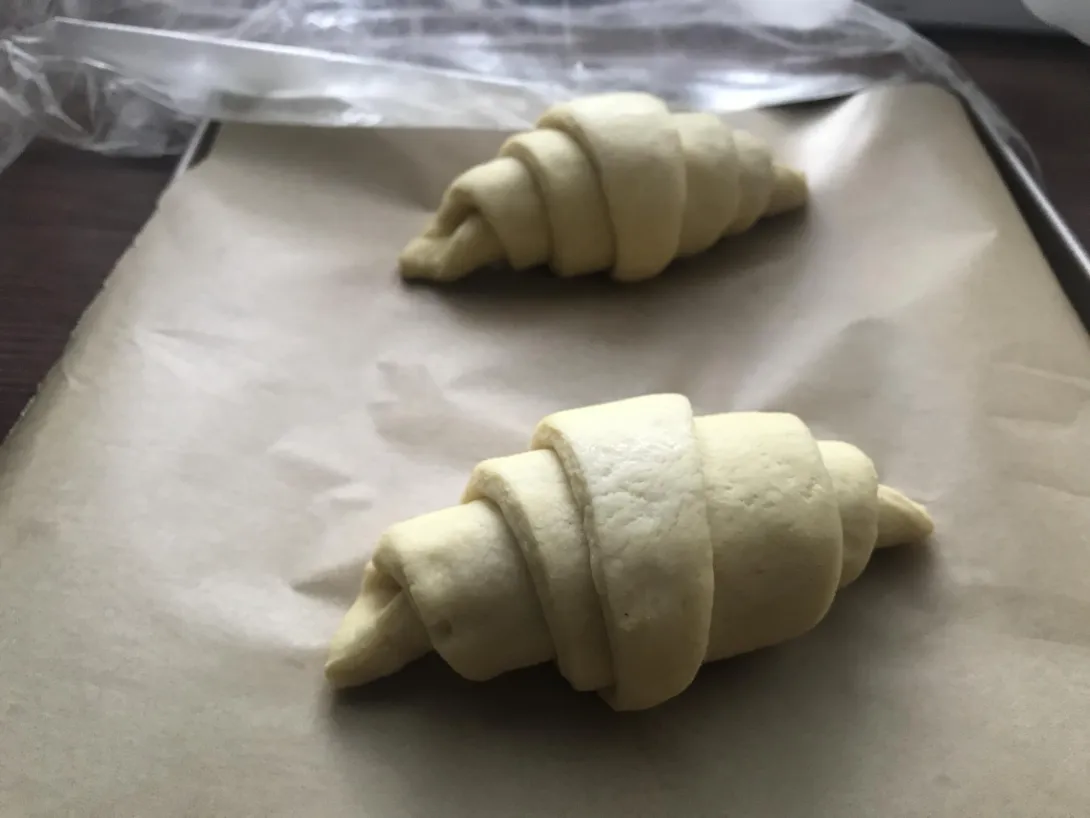

this is the recipe i’m using:
500gr Flour (400AP +100 bread flour)
250 water
12gr instant dry yeast
10gr salt
50gr sugar
100gr butter
laminating butter: 250gr
i feel like it’s getting worse every time. i have never got a honeycomb and my croissants fail to rise during proofing nor brown in the oven.
for example, last night i made some croissants, fold them into their shapes and placed them in the fridge overnight. in the morning, i took them out and proofed them at 23oC room for 3 hrs, and they seem to not have grown in size at all

i can’t seem to have a smooth croissant surface too and i don’t know what i did wrong to have my croissant not proofing.
any input would be of much help??
It will take some time to get the interior to 'honeycomb'. I will usually only make croissants during cooler months but in los angeles we get our fair share of heat. I avoid freezing your pin btw. Instead its probably better to focus on laminating faster before the counter warms your dough and butter. Also, I am not a big fan of the whole shape and chill but rather shape and proof. Use a strong bread flour and euro butter. You use practically the same recipe as I do and usually final proof around 1 hr. The lanination stage is critical and most importantly (imho) is to get the dough and butter to the most similar state of malleability. I will usually pull my butter slab from the refridgerator and sit it upon the counter for roughly 5-10 minutes to slightly soften. Meanwhile I place the dough rolled to about 10-15mm thick innthe freezer for again, about 5-7 minutes to build some firmness. After those 5-7 minutes, both butter and dough are most similar in malleability and can be laminated with relative ease. When its warm weather I will do an intermediate chill between folds. During cooler whether sometimes do all the folds at once then chill, then shape and proof. If you keep posting your results we csn get you to croissant bliss ;)
Thank you so much for your encouragement! i was slightly discouraged after reading some posts made by others that they achieved honeycomb after a dozen of tries. I think i am disadvantaged by the warm climate. I would like to add, for the beurrage i sometimes use a butter brand called Flechard, their Tourage series (99% butterfat). I read that they are made specially for laminating. I know most recipes call for 82-83% butterfat for laminating, but is it ideal to use higher butterfat to prevent the butter and dough mushing together?
My best attempt was using Bruno Albouze's Chocolate croissant recipe, however i find the dough too soft for the temperatures i am in.
Here are some attempts that i felt *worth* documenting since some are just far too bad :)
#1: Les Sens Ciel's Recipe (Youtube) using mostly Pastry T45 Flour
#2: Buttermilk pantry Croissant Recipe
#3: Bruno Albouze's Recipe - Chocolatine
Don't get discouraged. The good news is they always taste good regardless of the structure. To the point of butter fat, its not always good to shoot for the highest fat butter in fact I will never laminate with for example Kerrygold which has a really high fat content. Its just too soft and warms - just forget about it, its goosh everywhere. Looking at your pics the two things that stick out are of course the honeycomb (or lack thereof) - looks like the layers maybe becoming suck together which I think mean you just need to keep working at the lam stage. the other thing is the shape of you cross section is a bit flat. You want a bulbous cross section so I am thinking you are proofing too long. I also use brunos formula (ingredients) but as mentioned never had success with over night freeze. its better in my opinion to make sure you have really strong bread flour and then proof for about 1 hr (maybe less if your kitchen is aboce 80F). From here bump the oven temps 10 or 20 degrees (cant recall brunos recommendation). this will fight the strong dough. Also if you look through my blog you will see some cross sections during lamination which speaks to the point that you need to keep the layers separated, otherwise you get sweet bread. Keep going you will get there !
Based on the crumb, it looks like the flour(s) used are too weak. Croissants require strong flour.
I saw mention of T45 flour, be aware that you need the right type of T45, one that is higher in gluten.
T45 denotes ash content, it is a pastry flour because it is very refined (white). Some T45 flours are intended for pastries, such as tarts, pies, etc. but the type you need should be labelled as being suitable for croissants and puff pastry.
T45 Pastry will not work nor any pastry flour. For the OP, I use King Arthur Bread so perhaps that can serve as an equivalent good call !
Thank's for your input, i've stopped using T45 flour, not even for mixing. I use a mix of 20% AP and 80% BF, the recipe is stated below. I have finally achieved a real croissant although no honeycomb yet.
I'm not saying these are perfect, but they're the closest i get to real croissants, and the first croissants i made that FLAKES!!
I altered the recipe into:
300gr Flour (250gr bread flour + 50gr AP flour)
180gr super cold milk
5 gr instant dry yeast
20gr sugar
6.5gr salt
30gr butter
laminating butter: 155gr (99% butterfat Flechard brand)
This time i incorporated the butter into the dough after kneading the rest of the ingredients until it's no longer shaggy and have developed some strength. after adding the butter i continued kneading until reached some windowpane (that rips easily when pulled, but nevertheless some windowpane). I made sure to use very cold milk, and after the dough is done i leave it to rest in the fridge for 2hrs.
Due to the warm temperatures (27oC to be exact) i took out the butter 10 minutes before the lam process, because 30 mins would make it too goopy. For this batch i did all the lam in one go, 1 book fold and 1 single fold, wrapped it in plastic and chilled it for 1hr. Then i rolled it into 30 x 20cm, chill it for another 15 minutes before cutting the triangles and proof. I proof it in a cooled AC room at 23oC for 2 hrs, but it think i need to push it an extra 30 mins (total 2h 30 mins) from a recommendation i read somewhere.
My problem now is that i have yet to achieve a croissant with 7 shoulders (mine only got 5), and they are still on the flat side with minimal honeycomb. somehow i can't get the even, dark coloring like other croissants. more to come! i'll keep trying until i'm satisfied although i know i'm not gonna get on Lune Croissant level
Looking so much better. If you have a stand mixer you can get the ideal strength by doing 4 minutes on the slowest speed then 4 on the highest, or until the dough separates from the bowl. I recommend 100% bread flour though. Also - 14g of instant yeast probably get some more rise. Keep going you're doing great !
I would suggest your dough is primarily undermixed and over risen (you seem to have your flour figured out now). The second attempt you posted looks much better mixed. I suggest ~ 10minutes of total mixing. Give the dough about a 30-45 minute bulk ferment after mixing, then degas/flatten and chill quickly in the freezer. Because your environment is so warm, the dough will proof somewhat while laminating. The butter should never ever feel "goopy". European butter should be pliable at lower temps than normal butter, allowing you to work with colder dough while laminating. If at any point the butter seems liquid or goopy or slippery, put everything back in the fridge/freezer to chill back down. Ideal working temp for the dough is between 40 and 45 F
After shaping, this is where you can give an extra long proof if needed. Proofing croissant longer at the end of the process is a much better situation than over proofing the dough from the start. Severely over proofed dough will seem like it's not doing anything at the final proof.
Once you have these techniques down, then try longer bulk fermentation in the beginning to see how it changes the final product.